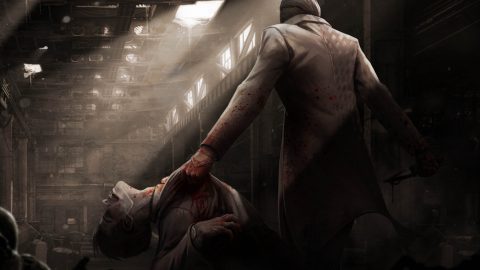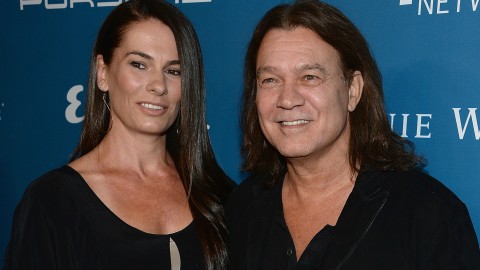
Riot Games has unveiled its first non-League Of Legends-related game: Valorant, a tactical hero shooter unlike any other.
Even before Valorant’s official release, the game took Twitch by storm and broke the platform’s “single-day hours watched record in a single game category” with 34 million hours watched.
Now that Valorant has officially launched, Riot has continued to evolve the game with new patches, upcoming agents, fresh game modes and more. Read on for everything we know so far about Valorant.
What’s the latest news?
- ‘Valorant’ Act 3 goes live with new map, deathmatch changes and more
- Watch the trailer for the latest Valorant agent, Skye
- Riot Games delays new Valorant agent by two weeks
What is Valorant?
Valorant is a 5v5 tactical hero shooter developed by Riot Games, best known for the Multiplayer Online Battle Arena (MOBA) title League Of Legends. Each match of the game goes up to 25 rounds, with the first team to win 13 rounds emerging as the victor.
At the start of every match, players pick from a pool of characters (called agents), each with their own special abilities. Both teams share different pools, so it is possible for there to be the same agent on opposing teams in the same game.
What platforms are Valorant available on?
Valorant is currently only available on PC, but Riot Games has stated that it is working on prototyping the game for consoles. However, the company has also cautioned that “there’s a way to play this game and there’s a way to experience this game that we’re not entirely sure translates completely to console play”.
Is Valorant free-to-play?
Much like Riot Games’ other releases, Valorant is a free-to-play online game with skins and other cosmetic items available for purchase in-game.
What is the gameplay of Valorant?
Valorant’s main mode (which is available in both Unrated and Competitive) is similar to Counter-Strike’s Defuse.
The attacking team is tasked with planting a bomb (called a Spike) at one of several sites – ranging from two to three, depending on the map – and defend it until it explodes. On the other hand, the defending team wins when all opposing players are eliminated, when the clock rounds out, or when a planted Spike is defused.
Each game of the main mode is won when a team wins 13 rounds. Characters are chosen at the start of each game and cannot be changed during the course of a match. Watch the gameplay trailer for Valorant below.
A new mode, called Spike Rush, was introduced when Valorant was officially released in June 2020. Spike Rush is won when four rounds are won and lasts notably shorter than the main mode, 8 to 12 minutes vs 30 to 40 minutes, respectively.
The mode also gives every attacking player a Spike, as opposed to just one, and gives everyone on both teams the same random weapon. All skills are free every round, while two ultimate points are awarded for kills and deaths.
In addition, the game also features five special power-up orbs, items that give teams special abilities or ailments if captured. They range from Health, which grants HP regeneration, to Deception, which reduces the enemy team’s vision.
A third mode, free-for-all deathmatch, was added during Episode 1, Act 2 on August 5. The new mode will feature 10 players per game, the same as a standard Valorant match, with the first player to reach 30 kills wins.
However, unlike a normal round of Valorant, deathmatch will not include any abilities but instead focus on gunplay with unlimited credits for weapons every time a player spawns. Another notable detail about deathmatch is health packs, which will drop whenever players are killed. The mode’s minimap will also reveal the locations of nearby enemy players every five seconds.
What are the characters available in Valorant?
Valorant currently features 12 different playable characters (called agents), each with three unique abilities and one ultimate skill.
The abilities range greatly between agents. Some skills are more familiar to fans of tactical shooters, such as Brimstone’s Sky Smoke and Phoenix’s Curveball, which emulate smoke screens and flash bangs respectively. Meanwhile, the other abilities range from Sage’s Barrier Orb (which raises a solid wall) to Jett’s Updraft (which launches her into the air) and everything in between.

In June 2020, Riot Games announced plans to introduce six new agents a year. Each new character will accompany the release of a new act in the game, which is set to arrive roughly once every two months.
The first new agent introduced to Valorant is Reyna. She is the 11th agent and launched when the game was first officially released on June 2.
The 12th agent is Killjoy, who was added to the game when Episode 1, Act 2 launched on August 4.
What is the latest update for the Agents?
Riot Games officially revealed the 13th Valorant agent, Skye, in early October with a new trailer that showcases all of Skye’s abilities in action. Skye, who hails from Australia, is an Initiator agent, much like Breach and Sova, and features a skillset that ranges from flashes to heals.
As previously reported, Skye is set to join Valorant in Patch 1.11, which is scheduled for release on October 27. She was initially supposed to be introduced alongside the launch of Act 3 on October 13, but was delayed to make way for the game’s new map, Icebox.
On September 30, Riot Games unveiled patch 1.09 for Valorant. It included small buffs and nerfs for a number of agents, including Omen, Reyna and Brimstone. A larger change was made to the Burst Fire for Jett’s Blade Storm ultimate, which will now require users to wait 0.45 seconds to use Burst Fire consecutively, up from 0.33 seconds.
Riot Games released patch 1.08 on September 17, bringing about a change for Raze’s Blast Pack ability, which now no longer damages allies. The skill will also now start off with an initial damage of 15 within a 0.2 meter radius, but after the satchel lands, it will be armed after 0.5 second and increase its damage to 50.
The change is to prevent Raze from being able to damage enemies without giving them a chance for “counterplay”, Riot Games explained. “This change should help make it very clear when Blast Pack’s damage poses a threat while maintaining the utility aspects of the Blast Pack that players have begun to master.”
On September 2, Riot Games released a huge patch for Valorant that included the first major update for new agent Killjoy, alongside noteworthy nerfs for Sage. Meanwhile, Viper and Breach received another round of hefty buffs. Read all about the changers in patch 1.07 here.
Riot Games released patch 1.05 on August 4, and it included massive Raze nerfs. The agent’s ultimate ability, Showstopper, now takes longer to equip (from 1.1 seconds to 1.4 seconds) to allow “enemies more time to plan and acquire Raze when [notified of the skill’s activation]”.
In addition, the damage of Raze’s Blast Pack skill has been reduced by a third from 75 to 50, while damage to objects (such as Sage’s Barrier Orb) will be fixed at 600. “We want to reduce this ability’s efficacy at damaging players while sharpening its ability at clearing enemy utility and obstacles,” the developer noted.
On July 30, Riot Games officially unveiled its 12th Valorant agent, Killjoy. She was introduced with an action-packed trailer that shows off all her previously leaked abilities. It includes never-before-seen footage of her Turret and Nanoswarm skills in action, as well as a first look at the character model.
Riot Games had initally accidentally leaked details about Killjoy, the upcoming 12th agent, prior to the launch of Act 2. A news post was published on its official website with descriptions of her abilities as well as videos of them in action.
On July 22, Riot Games released patch 1.04. The update featured another round of massive buffs for Viper, including improvements to her ultimate, Poison Cloud and Toxic Screen abilities, as well as a stronger version of her decay debuff.
The patch also nerfed Raze and Brimstone’ ultimate abilities, Showstopper and Orbital Strike, respectively, which now cost seven ult points. But Brimstone also received a slight buff as his Stim Beacon will no longer benefit enemies, while its effect radius will not be visible to the opposing team anymore.

Lead character designer Ryan “Morello” Scott revealed plans to buff and nerf several agents during a Twitch stream on July 15. On the buff side, he stated that both Breach and Viper need “a lot of help”.
Meanwhile he noted that “Sage is still nuts”, implying more nerfs for that agent. In addition he also said that added that the agent Raze is “looking pretty nasty”, and stated that he has “some idea on Raze that I think will be pretty popular”.
On June 23, Viper received several major buffs in Patch 1.02 in order to make the agent “a lot more potent”, according to Valorant lead character designer Ryan “Morello” Scott. The changes affected two of Viper’s abilities: Snake Bite and Toxic Screen.
Snake Bite received a new mechanic called “Fragile”, which is a debuff that will increase the damage taken by inflected characters. On the other hand, Toxic Screen now has the ability to be shot through walls and piece through the map.
Patch 1.02 also updated Jett’s Blade Storm ability and Reyna’s Soul Orbs mechanic. The former’s skill will now refresh when used to kill Phoenix during Run It Back. Similarity, killing Phoenix during Run It Back will now also spawn Soul Orbs for Reyna.
On June 9, Riot Games nerfed Sage’s Barrier Orb ability in Patch 1.01. The cast range was reduced by half as it was “allowing Sage to aggressively take control of neutral territory in a way that was inappropriate for her role in Valorant”.
What is the latest content update for Valorant?
Riot Games officially launched Act 3 of Valorant, alongside patch 1.10, on October 13. It added the new map Icebox, changed deathmatch mode and previously detailed ranked mode changes.
The sprawling Icebox Max, which Riot Games has called a “complex combat space that features plenty of cover and verticality”, launched for unrated, deathmatch and Spike Rush modes. However, the new map was not be available to play in competitive mode as the developer wants to “optimise the performance on the map as well as continue to fix any bugs that might appear”.
Deathmatch mode has also received a minor overhaul, with changes made to the number of players, match length and more. Player count for a deathmatch game has been increased from 10 to 14, and periodic location pulse of enemies on the mini-map has been removed as a result.
Deathmatch length has also been increased to a maximum of nine minutes or until the first player reaches 40 kills – up from six minutes and 30 kills, respectively. In addition, weapons will fully reload after a kill – except for the Ares and Odin machine guns, which will get 30 bullets back instead – and XP gain for a match has been upped to 900 from 500.
The most notable update to competitive play was the change to rank variation, decreased from six to three tiers. This means that players can only be matched with players who are within three tiers of their current rank. In addition, the rank movements for those in Immortal tier and above will now only be impacted by wins or loses.
Players can now also choose their preferred server, although the developer cautioned that it “can’t fully guarantee you’ll always get the server you want, due to Matchmaking reasons”. However, Riot noted that “this feature will notably increase the chance to get your preferred game server and either stabilize or help improve your ping”.
Ahead of the launch of Valorant Act 3, Riot Games unveiled a new teaser for the latest Valorant map, called Icebox. It brings players to an industrial zone set on a snowy tundra, featuring large outdoor area filled with shipping containers and long sightlines, alongside an office space with tighter angles and narrow corridors.
In early October, Riot Games detailed major changes coming to Valorant’s ranked mode in a new Dev Diaries episode.

Patch 1.09 for Valorant was released on September 30. The update finally changed up the game’s Operator sniper rifle, which the developer admited has been “a frequent talking point around the community”.
The price of the sniper rifle has been increased by 500 credits to a whopping 5,000, which Riot Games hopes will help “[delay] the Operator’s appearance and [increase] the penalty for dying with one in hand”.
The Operator has also received changes to reduce the effectiveness of “aggressive” Operator users. The tweaks include: decreased scoped movement speed from 76 to 72 per cent; reduced firing rate from .75 to .6; instant equip time increased by 0.2 to 0.5; and lower leg shot damage of 120 from 127.
On September 17, Riot Games released patch 1.08 for Valorant which introduced another buff for the Guardian rifle. The gun’s price has been reduced by 100 credits to 2,400, with an improved rate of fire (at 5.25 rounds per second from 4.75) and faster recovery after firing three bullets.
Riot Games noted that it does not want the Guardian to compete with other rifles, such as the Vandal or the Phantom, but instead “a place where players can feel good opting into the gun at the new price”.
Patch 1.07 was released on September 2, and it included another round of nerfs for shotuguns. Tagging for all shotguns will now be applied differently from other weapons if shot beyond 10 meters, and only slow targets 30 per cent for half a second.
On the other hand, the rifle Vandal has received a slight buff this time around. The gun’s firing rate has been bumped up to 9.75 from 9.25, while damage is a smidge higher at 40, from the original 39.
On August 20, Riot Games returned from its week-long break with patch 1.06 for Valorant. It was a small patch that was headed by a major nerf to all shotguns, which have been made to be less accurate when fired in the air, with its spread penalty increased to 1.25.

Patch 1.05, which was released on August 4, included matchmaking tweaks for competitive mode. Solo players and duo groups will now have a “higher chance” to encounter teams of a similar makeup “at the cost of queue times being slightly longer”.
Riot noted that the change was not because of unbalanced teams, which “is sitting fairly close to 50 / 50 for which team wins”, but due to a “larger skill disparity between the best and worst players”.
In July, Riot Games announced that it would be introducing a new rank system, called Act Rank. Act Rank will not replace the current Match Rank system, but will instead act as an ongoing history of past rank placings per Act, which launch every two months.
The new system will be a reflection of a player’s nine best ranked wins of the act, as well as the number of games won. Act Rank will also track a gamer’s “proven skill”, which will be the “ninth best ranked win of the Act, to demonstrate you can consistently win at that level”.
Act Rank will be displayed as a triangle filled with smaller triangles that represent ranked match wins over the course of a single two-month Act. The larger triangle will also feature a border that changes with more wins, at nine, 25, 50, 75 and 100 win thresholds.

The Classic pistol was reworked in patch 1.04, which was released on July 22. Several bugs for the gun, such as running and jumping inaccuracy penalties, have been fixed. Meanwhile, the efficacy of the right-click spread shot has also been tuned, alongside a 10 per cent accuracy bonus while crouching or staying stationary.
The patch also featured buffs and nerfs for agents such as Viper, Sage and Brimstone. It also included UI changes for the pre-round weapon shop, a handful of performance updates and a slew of bug fixes. For the full list of changes
Riot Games has revealed that it has an “interest in exploring” a replay system for its new tactical shooter, Valorant. It also confirmed that a gifting system will be implemented in the game “by the end of 2020”.
Patch 1.03 for Valorant was released on July 7. It revamped the Guardian rifle and changed how sudden death for ranked games works.
Sudden death for ranked games (also known as Competitive mode) was tweaked with teams now alternating between attackers and defenders until “a team claims victory by being up by 2 rounds”. Credits and ultimate points will also be reset every round, and games can also end in a draw.
On the other hand, the mid-tier rifle Guardian has been revamped. Its price was reduced to 2500 credits, with a slower rate of fire of 4.75 from 6.5. Meanwhile, the gun’s penetration power was been upped to heavy, alongside a slightly higher input queue.
On June 24, Riot Games rolled out ranked mode for Valorant across all regions. It also included updated rank iconography and badges, as well as a new name for the game’s top rank, which has been changed from Valorant to Radiant.
Patch 1.02 for Valorant was released on June 23. It featured buffs for agents such as Viper, Jett and Reyna, as well as a notable nerf for tagging – which is the slowdown players experienced when hit by enemy bullets.
Other changes in the patch included the addition of a surrender option, UI changes for the menu screen, performance tweaks and bug fixes. The update was also supposed to re-introduce ranked mode, but was delayed due to a game-breaking bug.
Patch 1.01 for Valorant was released on June 9, a week after the game’s official launch. The biggest change was another nerf for the agent Sage, whose cast range for her Barrier Orb ability was reduced by half.
The update also added new orbs, items that give teams special abilities or ailments if captured, for Spike Rush mode. Three new orbs have been introduced: Health, which grants HP regeneration; Deception, which reduces the enemy team’s vision; and Golden Gun, which turns your weapon into a one-shot, one-kill gun.
Patch 1.0 for Valorant launched alongside the game’s official release on June 2. It introduced Spike Rush mode, which delivers a “fresh and more hectic flavour of Valorant”, plus a new map called Ascent. It also introduced the game’s 11th agent, Reyna.
The post ‘Valorant’: gameplay, agents, weapons, episodes and everything you need to know appeared first on NME Music News, Reviews, Videos, Galleries, Tickets and Blogs | NME.COM.









